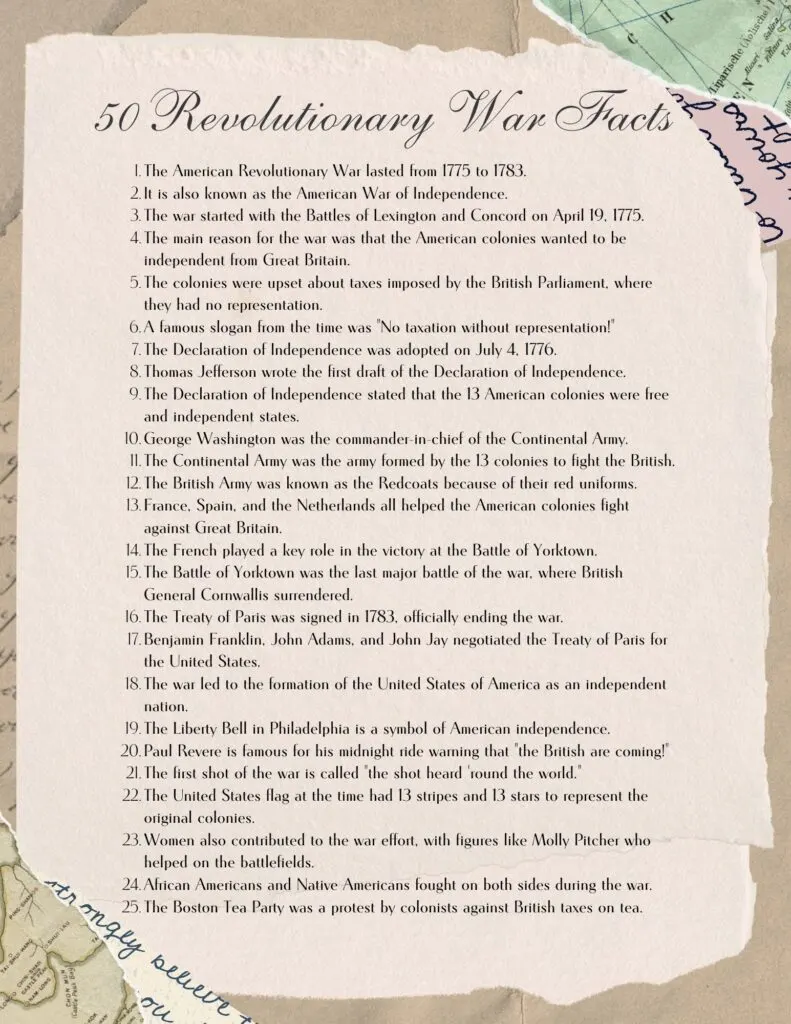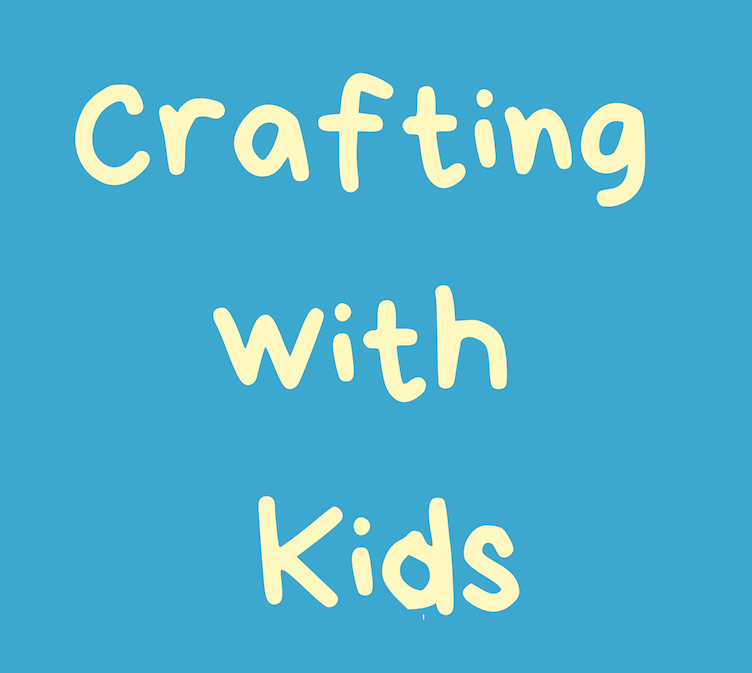I know the terms ‘war’ and ‘kids’ don’t necessarily go hand in hand, but it’s super important for our children to learn about history and some of the struggles we faced creating the country that we know today.
By learning about the Revolutionary War, children gain a well-rounded education that not only informs them about their nation’s history but also helps develop their analytical skills, moral reasoning, and social understanding.
By exploring the Revolutionary War through interesting facts and stories, children not only learn about the past but also gain valuable skills and insights that can be applied throughout their education and personal development. It also shares a bigger picture of where we came from and how the British government ruled over our forefathers, until a few turning points in the war like the Boston Massacre.
I’ve also got loads of other educational posts too so check these out before you go;
30 Interesting Cactus Facts for Kids
Rainbow Facts for Kids: Colorful Mysteries Unveiled
50 Interesting Revolutionary War Facts for Kids
You can see the image files below. You can also download the files here too.


- The American Revolutionary War lasted from 1775 to 1783.
- It is also known as the American War of Independence.
- The war started with the Battles of Lexington and Concord on April 19, 1775.
- The main reason for the war was that the American colonies wanted to be independent from Great Britain and the British Empire.
- The colonies were upset about taxes imposed by the British Parliament and British troops, where they had no representation.
- A famous slogan from the time was “No taxation without representation!”
- The Declaration of Independence was adopted on July 4, 1776.
- Thomas Jefferson wrote the first draft of the Declaration of Independence.
- The Declaration of Independence stated that the 13 American colonies were free and independent states.
- George Washington was the commander-in-chief of the Continental Army.
- The Continental Army was the army formed by the 13 colonies to fight the British.
- The British Army was known as the Redcoats because of their red uniforms.
- France, Spain, and the Netherlands all helped the American colonies fight against Great Britain.
- The French played a key role in the victory at the Battle of Yorktown.
- The Battle of Yorktown was the last major battle of the war, where British General Cornwallis surrendered.
- The Treaty of Paris was signed in 1783, officially ending the war.
- Benjamin Franklin, John Adams, and John Jay negotiated the Treaty of Paris for the United States.
- The war led to the formation of the United States of America as an independent nation.
- The Liberty Bell in Philadelphia is a symbol of American independence.
- Paul Revere is famous for his midnight ride warning that “the British are coming!”
- The first shot of the war is called “the shot heard ’round the world.”
- The United States flag at the time had 13 stripes and 13 stars to represent the original colonies.
- Women also contributed to the war effort, with figures like Molly Pitcher who helped on the battlefields.
- African Americans and Native Americans fought on both sides during the war, even fighting their own Indian war against first European states and then the American government.
- The Boston Tea Party was a protest by colonists against British taxes on tea.
- The Intolerable Acts were laws passed by the British to punish the colonists for the Boston Tea Party.
- The Sons of Liberty was a group of colonists who organized protests against British policies.
- Patrick Henry gave a famous speech that included the line, “Give me liberty, or give me death!”
- The first Continental Congress met in 1774 to address issues with Great Britain.
- The second Continental Congress managed the colonial war effort and moved towards independence.
- The American flag’s 13 stripes represent the 13 original colonies that fought against Great Britain.
- Betsy Ross is often credited with sewing the first American flag.
- The American colonies formed the first Continental Army on June 14, 1775.
- The Battle of Bunker Hill was one of the early battles of the war, and although the British won, they suffered heavy losses.
- Nathan Hale, a soldier for the Continental Army, is famous for saying, “I only regret that I have but one life to lose for my country.”
- The British forces captured the important city of New York early in the war, but it was later evacuated in 1783.
- Valley Forge was the site of the Continental Army’s camp during the winter of 1777-1778, where they faced harsh conditions.
- Marquis de Lafayette was a French nobleman who became an important leader in the Continental Army.
- John Hancock was the President of the Second Continental Congress and is known for his large signature on the Declaration of Independence.
- The British General John Burgoyne surrendered at the Battle of Saratoga, which was a turning point in the war.
- The Battle of Saratoga is considered the “Turning Point” of the war because it convinced France to openly support the American cause.
- The Culper Spy Ring was a network of spies for the American force that included both men and women.
- The war’s last major battle, the Siege of Yorktown, began on September 28, 1781, and ended with British surrender on October 19, 1781.
- The “Hessians” were German mercenaries hired by Great Britain to fight against the American colonists.
- The war had many naval battles, with John Paul Jones being a notable American naval hero.
- The famous phrase “Don’t tread on me” comes from the Gadsden Flag, a symbol of American independence and resolve.
- Ethan Allen and the Green Mountain Boys captured Fort Ticonderoga from the British in 1775, which provided much-needed artillery for the Continental Army.
- The Olive Branch Petition was a final attempt by the colonists to avoid going to war with Britain, but King George III rejected it.
- The Quartering Act required colonists to house and supply British soldiers, which was another source of tension leading up to the war.
- The Battle of Trenton was a surprise attack by George Washington’s troops on Christmas night, 1776, resulting in a significant American victory.
I hope you’ve found these interesting facts for kids educational and helpful in teaching your little ones about history. History is so important to learn about, and the younger the better!
